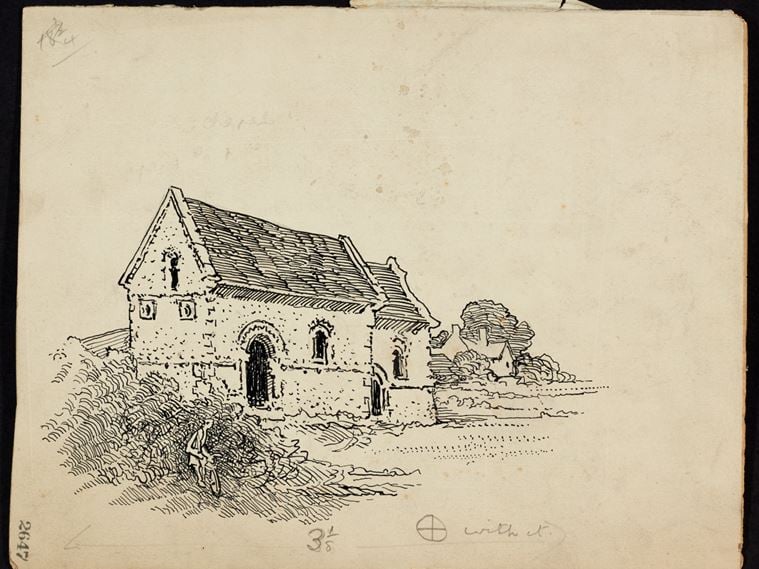Cambridgeshire
Explore hidden histories, historic photos, and things you never knew about Cambridgeshire from the collections and archives of Historic England.
Discover your local listed buildings and places
Introducing some of Cambridgeshire's most historic sites, included in the National Heritage List for England. Some of these captions have been summarised by AI. Click through for the official List entry. Skip this section and go to place by numbers
Childerley Hall
Childerley
Childerley Hall features restored 16th-century moated gardens, initially linked to a manor by Sir John Cutts.
Thorpe Hall
Peterborough
Thorpe Hall, built for Oliver St John between 1650 and 1656, features walled gardens with Victorian additions and a park, all within a 26-hectare site in Peterborough.
King's College
Cambridge
King's College, founded by Henry VI, features notable grounds and iconic architecture like the King's College Chapel and the Gibbs Building, contributing to its historical and cultural...
Canary Cottage
Thorney
Farm cottage, built around 1750. Read the official list entry to find out more.
Wilbraham Temple
Great Wilbraham
Wilbraham Temple's origins trace back to the Knights Templar in the Middle Ages, featuring a C17 manor house surrounded by C19 parkland designed by Rev Hicks.
Croxton Park
Croxton
Croxton Park is an 18th-century house with a rich history, originally developed in the 16th century with gardens and a deer park.
Chippenham Hall
Chippenham
Chippenham Hall's park, originally laid out in the early 18th century, was redesigned by William Emes and Samuel Lapidge, incorporating numerous tree plantings and water features.
Duxford: Control Tower (Building 209)
Duxford
An airfield control tower, dating to 1942 and built by the Air Ministry's Directorate of Works and Buildings.
History Faculty Building
Cambridge
History Faculty Building, built 1964-1968 for the University of Cambridge to the designs of James Stirling, renovated in 1985-1986 by Bickerdike Allen Partners.
Hatley Park
Hatley
Hatley Park features historical gardens remodeled multiple times over centuries and is a Grade II* listed country house with extensive parkland and architectural significance.
Fitzwilliam Museum and boundary wall, plinths and gates t…
Cambridge
Museum, now known as the Founder's Building, built in 1837-1843 to the designs of George Basevi and completed by Charles Robert Cockerell, with further internal work carried out in 1875 by...
Burghley House
Barnack
Burghley House, built by William Cecil in the 16th century, is an impressive Elizabethan mansion surrounded by landscaped grounds designed by Lancelot Brown. It remains privately owned.
Water Tower
Linton
Water tower, 1935-6. Consulting engineers Sands & Walker of Nottingham. Brickwork by H. J. Paintin of Linton, steelwork by R. Watson of Bolton. Read the official list entry to find out more.
Duxford: Building 79 (Hangar 4)
Duxford
Aircraft hangar, one of a group of three, built in 1917-18 to the War Office's Directorate of Fortifications and Works Drawing Number 332/17.
Nos. 1-12 Scroope Terrace, the 1959 rear extension to no.…
Cambridge
A C19 terrace extended to the rear in the C19, C20 and C21. Read the official list entry to find out more.
Pearl Centre
Orton Waterville
Commercial offices, built between 1989 and 1992 for Pearl Assurance Ltd, to the designs of Chapman Taylor Partners with Ronald Farquharson Partnership as structural engineers.
Cambridge University Centre
Cambridge
Cambridge University Centre, designed by Howell, Killick, Partridge and Amis (HKPA) in 1963 and completed in 1967 with structural engineers Samuely and Partners and William Sindall Ltd as...
Little Downham War Memorial
Downham
First World War memorial with names added after Second World War. Read the official list entry to find out more.
Schlumberger Gould Research Centre and attached perimeter…
Cambridge
The Schlumberger Gould Research Centre and attached service yard wall to the north.
Church of St Thomas à Becket
Ramsey
The church of St Thomas à Becket, Ramsey was built in the late C12 as a guest house or infirmary for Ramsey Abbey and converted to a church in C13.
Botanic Garden, Cambridge
Cambridge
The Cambridge University Botanic Garden was designed by Andrew Murray in 1846, expanded post-1950s, featuring historic and modern plant collections since its initial establishment in 1762.
Anglesey Abbey
Lode
Anglesey Abbey, historically significant and left to the National Trust by Lord Fairhaven, features mid-20th-century gardens and historical statuary amid Cambridgeshire's fenland landscape.
Site of the Norman Cross Depot for Prisoners of War
Yaxley
The earthwork and buried remains of the Norman Cross Depot for Prisoners of War. It was built in 1796-97 and closed in 1814. In 1816 the buildings were demolished and the site sold.
Milton Hall
Bretton
The Fitzwilliam family's Milton Hall features C19 gardens and pleasure grounds, influenced by Humphry Repton's 1791 design, encompassing historical architecture and landscape elements.
American Military Cemetery
Madingley
The only permanent American Second World War cemetery in Britain, designed by Perry, Shaw, Hepburn and Dean, Architects and Olmsted Brothers, landscape architects and dedicated in 1956.
Duxford: Building 84 (Hangar 3)
Duxford
Aircraft hangar, one of a group of three, built in 1917-18 to the War Office's Directorate of Fortifications and Works Drawing Number 332/17.
The Hermitage, Darwin College
Cambridge
Former house, built in 1853, extended around 1870, now part of Darwin College. Read the official list entry to find out more.
A Bronze Age post alignment and timber platform at Flag F…
Thorney
A Bronze Age post alignment and timber platform to the east of Fengate Power Station, including Bronze Age and later field systems and settlement to either side of the Northey Road.
Cambridge Judge Business School
Cambridge
The Cambridge Judge Business School, mainly of 1993-1995 by John Outram for the Judge Institute of Management Studies, incorporating the former Addenbrooke's Hospital, built in the mid-C18,...
Norman Cross Memorial
Yaxley
Memorial column and sculpture presented in 1914 by the Entente Cordiale Society in commemoration of the prisoners of France and her Allies who died while interned at the Norman Cross Depot...
Church of St Peter and St Paul
Wisbech
The Church of St Peter and St Paul, Wisbech was constructed in the C12 and was substantially rebuilt in the C14.
Peckover House
Wisbech
Peckover House, a Georgian townhouse in Wisbech, was built in 1722 and owned by the Peckover family. The gardens were redesigned by the National Trust post-1948.
Peterborough Cathedral Precincts
Peterborough
Peterborough Cathedral Precincts encompass medieval and Victorian gardens, historically significant churches, and ecclesiastical buildings reflecting centuries of architectural evolution and...
Bourn Hall
Bourn
Bourn Hall, originally built in 1602, features landscaped gardens developed by the Reptons in 1817 and now functions as an infertility clinic with historic estate elements.
Roman Catholic Church of St Peter and All Souls, Peterbor…
Peterborough
A Roman Catholic Church designed by the architect Leonard Stokes, built between 1895 and 1904 and opened for worship in 1896. Read the official list entry to find out more.
Elton Hall
Elton
Elton Hall features gardens designed by Col Douglas Proby and A H Hallam Murray in 1913, with further development from the 1980s onward.
214 Chesterton Road
Cambridge
Private house designed in 1971 by Marcial Echenique for himself, working with the engineer P. Dann. Read the official list entry to find out more.
Huntingdon Castle (Castle Hills): a motte and bailey cast…
Huntingdon
Huntingdon Castle is a Norman motte and bailey site with well-preserved remains, significant for studying Norman Britain and its development, located in historically important Huntingdon.
Explore more
Search for more listed placesCambridgeshire through time
This timeline shows the first period of use for buildings and places on the National Heritage List for England, just one of the details recorded for every list entry. Click around to see how Cambridgeshire changes over time. Skip this section and go to aerial photos
Prehistoric Before AD 43
Prehistory covers a million years of human occupation before the Roman invasion and the introduction of writing. Primarily hunter-gatherers of several human species including Neanderthals, the peoples moved across Europe, hunting animals, exchanging ideas and developing complex culture and belief systems including burial rites and astronomical understanding, as at Stonehenge for example.
Roman AD 43 to AD 410
Britain was invaded by four legions of the Roman army in AD 43, who relatively rapidly conquered England from landing points in Kent. Parts of Wales and Scotland soon followed.
Roman culture brought urbanism, monumental buildings, wide-ranging religious beliefs, writing, and strong social hierarchy. The Roman administrative system was withdrawn in AD 410.
Early medieval AD 410 to AD 1066
This period, often associated in England with Anglo-Saxons and Vikings, saw a reduction in urban living from the Roman period and increased migration from northern Europe.
Traces of this period can be found in cemeteries, particularly in artefacts and in some of the very early churches, as this period also saw the growth of Christianity in Britain.
Medieval AD 1066 to AD 1540
This period, sometimes known as the Middle Ages, began with the Norman invasion in AD 1066. It saw a significant rise in military and defensive buildings such as castles and earthworks, as well as religious houses dominating a largely agricultural landscape.
The monarchy and Church dominated the period, which also saw the break with the Roman Catholic Church and the English reformation.
Post medieval AD 1540 to AD 1901
The Post-Medieval period brought seismic changes to life in England, with religious reformation leading to the democratization of worship and the destruction of hundreds of religious houses.
In parallel, there was a huge expansion of scientific study and enlightenment that permanently altered the nation's social structure and landscape. Industrialization and mass production lead to wider global trade, emigration, and immigration.
20th century AD 1901 to AD 2000
The 20th century saw an incredible expansion of England's transport networks, with suburban growth shadowing rapid infrastructural expansion. The establishment of state schools, hospitals, and modern technical colleges, with new architectural styles, radically changed the appearance of towns and cities.
Two catastrophic world wars and the 1918 pandemic also brought unprecedented change, altering England's built environment and social structures forever.
Prehistoric Before AD 43
Prehistory covers a million years of human occupation before the Roman invasion and the introduction of writing. Primarily hunter-gatherers of several human species including Neanderthals, the peoples moved across Europe, hunting animals, exchanging ideas and developing complex culture and belief systems including burial rites and astronomical understanding, as at Stonehenge for example.
Roman AD 43 to AD 410
Britain was invaded by four legions of the Roman army in AD 43, who relatively rapidly conquered England from landing points in Kent. Parts of Wales and Scotland soon followed.
Roman culture brought urbanism, monumental buildings, wide-ranging religious beliefs, writing, and strong social hierarchy. The Roman administrative system was withdrawn in AD 410.
Early medieval AD 410 to AD 1066
This period, often associated in England with Anglo-Saxons and Vikings, saw a reduction in urban living from the Roman period and increased migration from northern Europe.
Traces of this period can be found in cemeteries, particularly in artefacts and in some of the very early churches, as this period also saw the growth of Christianity in Britain.
Medieval AD 1066 to AD 1540
This period, sometimes known as the Middle Ages, began with the Norman invasion in AD 1066. It saw a significant rise in military and defensive buildings such as castles and earthworks, as well as religious houses dominating a largely agricultural landscape.
The monarchy and Church dominated the period, which also saw the break with the Roman Catholic Church and the English reformation.
Post medieval AD 1540 to AD 1901
The Post-Medieval period brought seismic changes to life in England, with religious reformation leading to the democratization of worship and the destruction of hundreds of religious houses.
In parallel, there was a huge expansion of scientific study and enlightenment that permanently altered the nation's social structure and landscape. Industrialization and mass production lead to wider global trade, emigration, and immigration.
20th century AD 1901 to AD 2000
The 20th century saw an incredible expansion of England's transport networks, with suburban growth shadowing rapid infrastructural expansion. The establishment of state schools, hospitals, and modern technical colleges, with new architectural styles, radically changed the appearance of towns and cities.
Two catastrophic world wars and the 1918 pandemic also brought unprecedented change, altering England's built environment and social structures forever.
Aerial photos of Cambridgeshire
Aerial photography helps reveal secrets of England's changing landscapes that are impossible to see from the ground. Skip this section and go to archive images
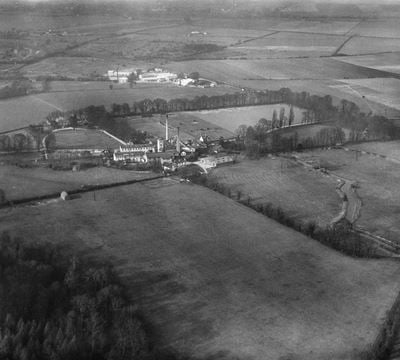
Sawston
Sawston Paper Mill and environs, Sawston, 1935

Sawston
The Sawston Paper Mill, Sawston, 1952
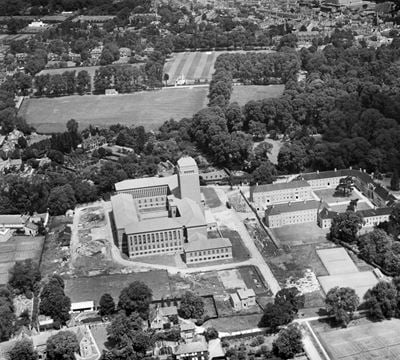
Cambridge
University Library, Memorial Court and St John's College Playing Fields, Cambridge, 1934
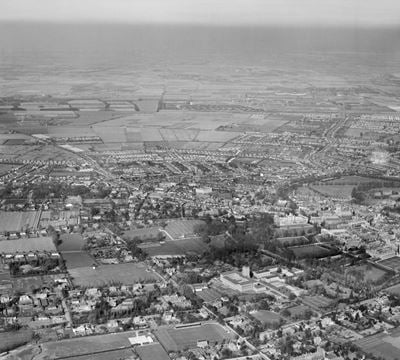
Cambridge
University Library and the city, Cambridge, 1948
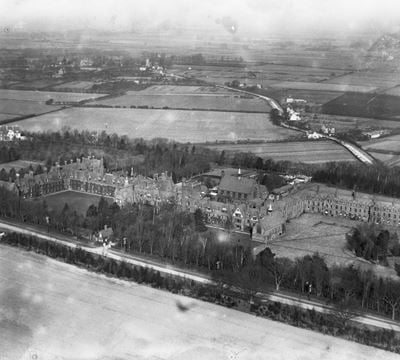
Girton
Girton College, Cambridge, 1920
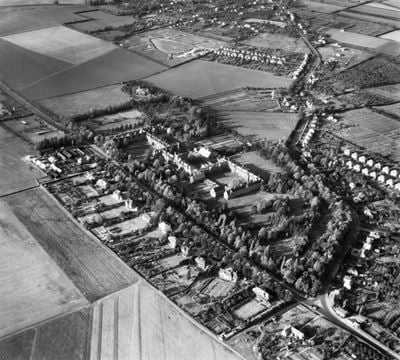
Girton
Girton College, Girton, 1947
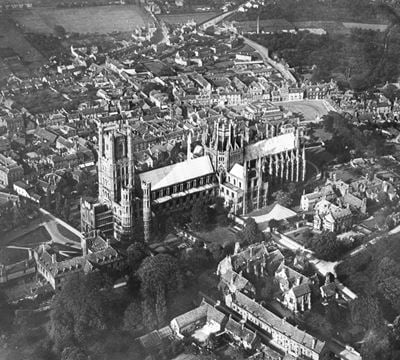
Ely
Holy Trinity Cathedral, Ely, 1925

Ely
The Cathedral of the Holy Trinity, Ely, 1951

Cambridge
Jesus College, Cambridge, 1928
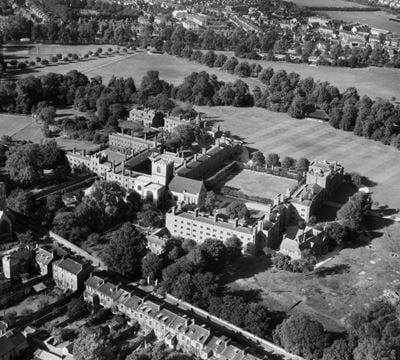
Cambridge
Jesus College, Cambridge, 1947
Cambridgeshire in the Historic England Archive
The Historic England Archive cares for over 15 million images, dating from the 1850s to the present day. Discover stunning images of Cambridgeshire's past. Skip this section and go to stories about heritage
Charles George Harper Collection
Barnwell Junction, Cambridge, Cambridgeshire
Date created: 1892 - 1933
A view from the south-west of the Chapel of St Mary Magdalene
Eric de Mare
Cambridge, Cambridgeshire
Date created: 1945 - 1980
Detail view of the Hobson's Conduit showing ornamentation around the ogee cupola.
John Gay Collection: London
Cambridge, Cambridgeshire
Date created: 1946 - 1999
Ash twig in leaf, Cambridge Botanic Gardens
John Gay Collection: Modern Architects
Cambridge, Cambridgeshire
Date created: 1978
The interior of Heffers Paperback Shop at 31 St Andrew's Street, showing the entrance lobby with the sign 'heffers: paperbacks' above
John Gay Collection: Rural Life
South Cambridgeshire, Cambridgeshire
Date created: 1960
A view of the gnarled trunk and branches of a large walnut tree on an area of grass at the north end of the High Street in Hildersham, South...
John Gay Collection: Counties
Trumpington, Cambridge, Cambridge, Cambridgeshire
Date created: 1946 - 1955
The National Council of Social Service stand at the Royal Agricultural Show at Trumpington near Cambridge
John Laing Collection
Wimpole Park, South Cambridgeshire, Cambridgeshire
Date created: 19 Jul 1990
A group of elderly people posed at the front entrance to Wimpole Hall, during a visit by Laing's Elstree Senior Citizens Club
London, Midland and Scottish Railway Company
Cambridge, Cambridgeshire
Date created: 24 Nov 1927
Interior view of the warehouse of E Purdage and Co in Cambridge
Alfred Newton and Sons
Wisbech, Fenland, Cambridgeshire
Date created: Jul 1899
RIVER NENE WITH SHIPS
Nigel Temple Collection of Postcards of Parks and Gardens
Cambridge, Cambridgeshire
Date created: 1900 - 1930
INTERIOR VIEW OF THE FERNERY
Walter Scott
South Cambridgeshire, Cambridgeshire
Date created: 1964
The south-west front of Harlequin House at 43 Abbey Street
John Laing Collection
Wimpole Park, South Cambridgeshire, Cambridgeshire
Date created: 19 Jul 1990
An elderly man and woman posed in the stable block courtyard at Wimpole Hall, during a visit by Laing's Elstree Senior Citizens Club
Stories about heritage in your local area
Historic England publishes news, blogs, research, videos, and podcasts celebrating England's rich heritage. Discover the stories we have about Cambridgeshire. Skip this section and go to education
Remembering Marietta Pallis, Godmother of the Norfolk Broads
Mentions Newnham College, Kennedy Buildings, Newnham College, House in the College Grounds Circa 100 Yards South of Clough Building
Discover the mysterious life story of ecologist and artist Marietta Pallis, who spent much of her life in the Norfolk Broads.
An Introduction to Artist Henry Moore
Mentions Falling Warrior Sculpture in Clare College Memorial Court
From Yorkshire miner’s son to world-famous artist who revolutionised sculpture in the 20th century.
5 Things to Know About Coronations
Mentions Coronation Fountain, Cathedral of the Holy Trinity
Discover the history and heritage behind the ancient English coronation ceremony.
A Brief Introduction to Christopher Wren
Mentions Emmanuel College, Trinity College
Christopher Wren was a polymath, scientist and world-renowned architect.
A Guide to English Gothic Architecture
Mentions Cathedral of the Holy Trinity
Learn how to identify the features and characteristics of medieval Gothic architecture in England.
The Colourful World of Architect John Outram
Mentions Cambridge Judge Business School
The brilliant colours and exuberant gestures of Outram’s work have captured the popular imagination, yet still retain the ability to shock.
Rock Stars: 8 Women Who Broke New Ground in Geology
Mentions Newnham College, Hall
Women have always had inquiring minds, but have often had to fight harder than their male contemporaries for equal opportunities.
These Places in England are Accidentally Wes Anderson
Mentions Canary Cottage
Will one of these places be the setting for the next West Anderson next film?
7 Historic Urban Parks and Gardens To Improve Your Wellbeing
Mentions Botanic Garden, Cambridge
Parks and green spaces are vital for our mental and physical health.
6 Places That Tell Stories of the St Ives Art Scene
Mentions Kettles Yard
During the 1950s, many of Britain’s leading artists congregated to St Ives.
How the Cold War Became Heritage
Mentions Regional Seat of Government
9 November 2019 marks the thirtieth anniversary of the fall of the Berlin Wall.
Hidden in Plain Sight: Evidence of the Second World War
Mentions Building 103 (Decontamination Centre)
Discover the evidence of how the Second World War had an impact on urban, suburban and rural England which are hidden in plain sight.
Planting Trees for the Future Whilst Protecting the Past
Mentions Cambridgeshire
Developing new datasets to ensure that the right tree is planted in the right place.
Research Reports Roundup February 2025
Mentions Cambridgeshire
A roundup of the latest additions to our research reports database from October 2024 to February 2025, arranged by theme.
Grant Funding for St Andrew's Church in Soham, Cambridgeshire
Mentions Church of St Andrew, Cambridgeshire
Initial support of £315,000 will progress restoration plans and involve young people in learning heritage skills at St Andrew's Church, Soham.
New Exhibition at Flag Fen in Peterborough Invites Visitors to Walk in the Footsteps of Bronze Age Ancestors
Mentions Cambridgeshire
Supported by Historic England, Flag Fen Archaeological Park in Peterborough, Cambridgeshire, has unveiled its newest exhibition.
50 Years of Flying for Heritage
Mentions Cambridgeshire
Learn about discoveries made in over 50 years of flying by Historic England aerial photographers and their predecessors.
War Memorials Listed in the East of England
Mentions Little Downham War Memorial, Mepal War Memorial, Cambridgeshire
4 First World War memorials in Cambridgeshire and Hertfordshire have been listed at Grade II by DCMS on the advice of Historic England.
Cambridgeshire Roman Town Given Protection
Mentions Cambridgeshire
A newly discovered Roman small town south of Great Staughton, Cambridgeshire, has been given heritage protection by DCMS.
Fitzwilliam College Cambridge Buildings Listed
Mentions Fitzwilliam College, Central Hall Building, Fitzwilliam College, New Court, Fitzwilliam College, Chapel
The Central Hall Building, New Court and Chapel at Fitzwilliam College, Cambridge, have been listed at Grade II by DCMS on Historic England's advice.
Malt Kilns and Malthouses
Mentions Ely Maltings, Cambridgeshire
A new book tells the important story of how maltings evolved in England and looks at their future use.
The Must Farm Story Told in New Publications
Mentions Cambridgeshire
New books published today tell the remarkable story of the Must Farm pile-dwelling settlement in Whittlesey, Cambridgeshire.
New Funding to Uncover and Celebrate Working Class Heritage in the East of England
Mentions Cambridgeshire
Historic England's Everyday Heritage Grant programme will reveal and celebrate fascinating untold stories from across the East of England and beyond.
Preserving Archaeological Remains
Mentions Cambridgeshire
A behind the scenes look at recent guidelines for best practice in preserving archaeological sites
Cambridgeshire's social history through photos
Over 10,000 images from the Historic England Archive have been specially selected and re-captioned for teachers, students, and anyone who wants to learn more about their local area. Skip this section and go to grant-aided places
Wothorpe Towers, Wothorpe, Cambridgeshire
Period: Tudor (1485 - 1602)
The ruins of Wothorpe Towers near Burghley House
Wothorpe Towers, Wothorpe, Cambridgeshire
Woodcroft Castle, Etton, Peterborough
Period: Medieval (Middle Ages) (1066 - 1484)
Woodcroft Castle incorporates the remains of a 13th century fortified manor house. It was built on a moated site.
Woodcroft Castle, Etton, Peterborough
Wisbech, Cambridgeshire
Period: Victorian (1837 - 1901)
GENERAL VIEW OF SHIPS ON RIVER NENE
Windmill, West Wratting, Cambridgeshire
Period: Georgian (1714 - 1836)
This smock mill was built in 1726 of brick with tarred weatherboarding over timber framing.
Windmill, West Wratting, Cambridgeshire
Wimpole Hall, Wimpole, Cambridgeshire
Period: Stuart (1603 - 1713)
This mansion house has 17th century origins, but was mainly built in the 18th century.
Wimpole Hall, Wimpole, Cambridgeshire
Westcott House, Cambridge, Cambridgeshire
Period: Victorian (1837 - 1901)
This building was constructed in 1899-1929. The building appears as an attractive Tudor court.
Westcott House, Cambridge, Cambridgeshire
War Memorial, Soham, Cambridgeshire
Period: World War One (1914 - 1919)
The is a First World War Memorial. The stone monument shows a standing infantry man with head bowed and hands resting on his rifle.
War Memorial, Soham, Cambridgeshire
Village College, Impington, Cambridgeshire
Period: 1930s (1930 - 1938)
This comprehensive school was originally built as a village college. It was constructed in 1938-9 by Walter Gropius and E Maxwell Fry.
Village College, Impington, Cambridgeshire
Visit grant-aided places near you
These places and buildings have been helped by Historic England's financial grants. Find historic places in your neighbourhood that you never knew existed! Please note that opening times may vary. Skip this section and go to related locations
Great Chishill Windmill, Barley Road
Great Chishill windmill is one of the very few surviving open trestle Mills.
Cambridge Museum of Technology, The Old Pumping Station
The Cambridge Museum of Technology, situated in Cambridge, England, is an industrial heritage museum housed in a Scheduled Ancient Monument.
Downfield Windmill, Soham
Originating in 1726, this mill underwent reconstruction in 1860 after storm damage in 1889.

